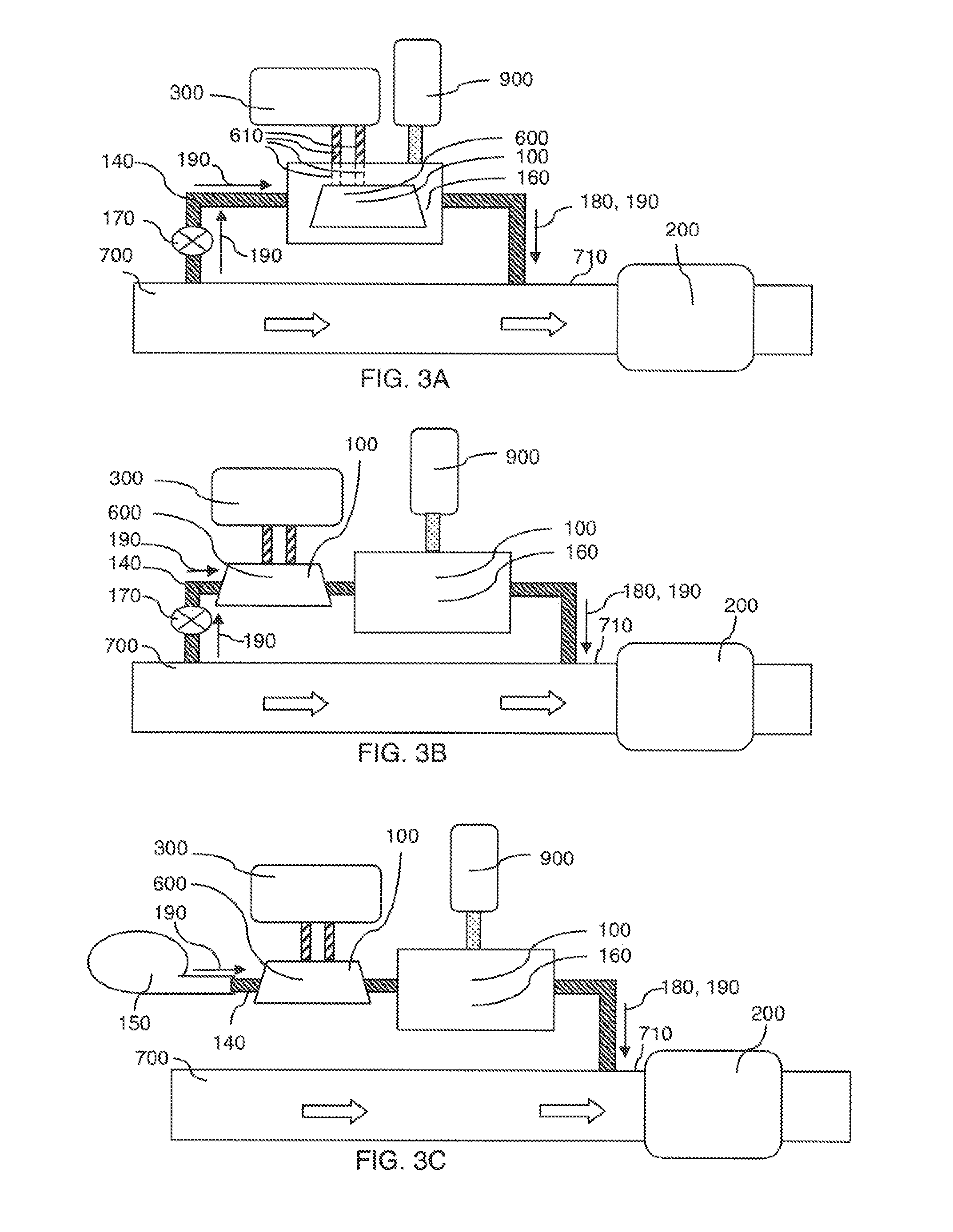Method and devices for heating urea-containing materials in vehicle emission control system
a technology of emission control system and urea-containing materials, which is applied in the direction of vehicle heating/cooling devices, machines/engines, energy input, etc., can solve the problems of urea solution, temperature reduction, exhaust gas cooling, etc., and achieve the effect of reducing nitrogen oxide emissions, reducing nitrogen oxides in scr, and efficiently producing ammonia
- Summary
- Abstract
- Description
- Claims
- Application Information
AI Technical Summary
Benefits of technology
Problems solved by technology
Method used
Image
Examples
Embodiment Construction
[0025]In the following detailed description, the specific embodiments of the present invention are described in connection with its preferred embodiments. However, to the extent that the following description is specific to a particular embodiment or a particular use of the present techniques, it is intended to be illustrative only and merely provides a concise description of the exemplary embodiments. Accordingly, the invention is not limited to the specific embodiments described below, but rather; the invention includes all alternatives, modifications, and equivalents falling within the true scope of the appended claims.
[0026]One or more of the problems associated with removing nitrogen oxides from an exhaust gas having a low temperature, may be overcome using a system that includes a heat storage device for providing heat to a gas producing reactor so that a reductant gas is efficiently produced from a solid or liquid reducing material. By way of example, the solid or liquid redu...
PUM
| Property | Measurement | Unit |
|---|---|---|
| liquidus temperature | aaaaa | aaaaa |
| temperature | aaaaa | aaaaa |
| solid surface temperature | aaaaa | aaaaa |
Abstract
Description
Claims
Application Information
 Login to View More
Login to View More - R&D
- Intellectual Property
- Life Sciences
- Materials
- Tech Scout
- Unparalleled Data Quality
- Higher Quality Content
- 60% Fewer Hallucinations
Browse by: Latest US Patents, China's latest patents, Technical Efficacy Thesaurus, Application Domain, Technology Topic, Popular Technical Reports.
© 2025 PatSnap. All rights reserved.Legal|Privacy policy|Modern Slavery Act Transparency Statement|Sitemap|About US| Contact US: help@patsnap.com



